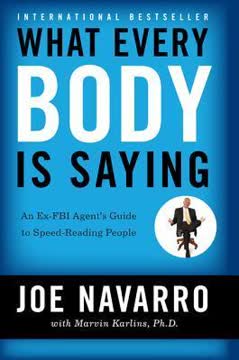Puntos clave
1. Domina el Arte de la Insinuación para Evitar la Resistencia
"La insinuación te permite eludir la resistencia natural de las personas, ya que parece que solo escuchan lo que ha surgido de ellos mismos."
La sugerencia sutil es poderosa. La insinuación te permite plantar ideas en la mente de las personas sin activar sus defensas. Al hacer sugerencias de manera indirecta, permites que el objetivo crea que las ideas son suyas, haciéndolo más receptivo. Esta técnica implica:
- Dejar caer pistas sutiles durante conversaciones casuales
- Usar un lenguaje ambiguo que pueda interpretarse de múltiples maneras
- Hacer comentarios o gestos "accidentales" que transmitan significados ocultos
- Dejar que el silencio y las pausas hablen por sí mismos
El momento es crucial. Las insinuaciones más efectivas se hacen cuando el objetivo está relajado o distraído. Las reuniones sociales, las charlas amistosas y las actividades compartidas brindan oportunidades ideales para deslizar comentarios sugestivos sin ser notados.
2. Crea una Necesidad Agitando Ansiedad e Insatisfacción
"La ansiedad, una sensación de carencia y necesidad, es el precursor de todo deseo."
Exploita el vacío interior. La mayoría de las personas tienen inseguridades subyacentes y deseos no cumplidos. Al recordar sutilmente a los objetivos lo que les falta o agitar la ansiedad sobre su situación actual, creas una necesidad que luego puedes satisfacer. Las técnicas incluyen:
- Insinuar oportunidades perdidas o potencial no realizado
- Comparar al objetivo desfavorablemente con otros
- Recordarles ideales pasados que han abandonado
- Sugerir que su vida actual carece de emoción o significado
Ofrece la solución. Una vez que has despertado la insatisfacción, posiciónate como la respuesta a sus necesidades recién descubiertas. Esto hace que el objetivo te vea como su salvador, abrazando con entusiasmo lo que tienes para ofrecer.
3. Aparece como un Objeto de Deseo para Aumentar tu Valor
"Queremos lo que otras personas quieren."
Crea un aura de deseabilidad. Las personas se sienten naturalmente atraídas por lo que otros encuentran atractivo. Al parecer popular y buscado, aumentas tu valor percibido y te vuelves más seductor. Las estrategias incluyen:
- Rodearte de admiradores
- Insinuar conquistas o relaciones pasadas
- Crear competencia o triángulos de deseo
- Mantener un aire de misterio e inaccesibilidad
Aprovecha la prueba social. Cuando otros parecen desearte, se activa un instinto competitivo en tu objetivo. Querrán poseer lo que otros codician, facilitando tu seducción.
4. Envía Señales Mixtas para Crear Intriga y Fascinación
"Una mezcla de cualidades sugiere profundidad, lo que fascina incluso mientras confunde."
Sé un paradoja. Los humanos se sienten atraídos por lo que no pueden categorizar fácilmente. Al mostrar cualidades aparentemente contradictorias, te conviertes en un enigma intrigante que otros quieren resolver. Ejemplos:
- Combina dureza con ternura
- Mezcla inocencia con sensualidad
- Equilibra intelecto con espontaneidad
- Alterna entre un compromiso cálido y una distancia fría
Mantenlos adivinando. La clave es nunca ser completamente predecible. Justo cuando tu objetivo cree que te ha descifrado, revela una nueva faceta de tu personalidad que los sorprenda.
5. Elige a la Víctima Correcta para una Seducción Exitosa
"La víctima perfecta tiene alguna cualidad natural que te atrae."
La selección del objetivo es crucial. No todos son igualmente susceptibles a la seducción. Busca individuos que:
- Estén pasando por un período de transición o vulnerabilidad en la vida
- Tengan necesidades o deseos no cumplidos que puedas explotar
- Posean cualidades que genuinamente te intrigan o atraen
- Muestren signos de aburrimiento o insatisfacción con su situación actual
Evita los objetivos incorrectos. Mantente alejado de aquellos que son:
- Demasiado contentos o satisfechos consigo mismos
- Excesivamente cínicos o desilusionados
- Emocionalmente inaccesibles o cerrados
Recuerda, tu interés genuino en el objetivo alimentará tus esfuerzos seductores, haciéndolos más convincentes y efectivos.
6. Crea una Falsa Sensación de Seguridad a Través de un Enfoque Indirecto
"Al principio no debe haber nada del seductor en tu manera."
Desarma a través de la amistad. Acércate a tu objetivo de manera indirecta estableciendo primero una relación no amenazante. Esto baja sus defensas y te permite recopilar información valiosa sobre sus deseos y vulnerabilidades. Las tácticas incluyen:
- Presentarte como un amigo o confidente
- Mostrar un interés genuino en su vida y pensamientos
- Ofrecer apoyo o asistencia sin expectativas
- Aumentar gradualmente la intimidad a través de experiencias compartidas
La paciencia es clave. Permite que la relación se desarrolle naturalmente, sin apresurarte ni presionar por más de lo que el objetivo está dispuesto a dar. Esto construye confianza y hace que tu eventual seducción parezca una progresión natural en lugar de un plan premeditado.
7. Entra en su Espíritu para Bajar Defensas y Ganar Confianza
"Juega según sus reglas, disfruta lo que ellos disfrutan, adáptate a sus estados de ánimo."
Conviértete en su espejo. Las personas son naturalmente narcisistas y se sienten atraídas por aquellos que reflejan sus propias cualidades. Al adaptarte a la personalidad, intereses y valores de tu objetivo, creas una conexión poderosa. Esto implica:
- Imitar su estilo de comunicación y lenguaje corporal
- Compartir sus entusiasmos y participar en sus pasatiempos
- Validar su visión del mundo y opiniones
- Adaptarte a su estado emocional y nivel de energía
Influencia gradual. Una vez que has entrado completamente en su espíritu y ganado su confianza, puedes comenzar a moldear sutilmente sus pensamientos y deseos. Esto te permite guiarlos hacia tu seducción sin que se sientan manipulados o presionados.
Última actualización:
FAQ
What's The Art of Seduction by Robert Greene about?
- Exploration of Seduction: The book delves into the psychology of seduction, presenting it as a powerful form of influence and control. It synthesizes historical examples and literary references to illustrate timeless strategies.
- Character Archetypes: Greene identifies ten archetypal seducers, such as the Siren and the Rake, each embodying different seductive qualities. These serve as models for understanding attraction and manipulation.
- Seductive Maneuvers: The book outlines twenty-four specific maneuvers for seducing others, emphasizing patience, strategy, and emotional manipulation.
Why should I read The Art of Seduction by Robert Greene?
- Understanding Human Nature: The book provides insights into human desires and motivations, revealing how seduction operates on both conscious and unconscious levels.
- Practical Strategies: Greene offers advice applicable in various social situations, enhancing persuasive abilities and social skills in both romantic and professional contexts.
- Historical Context: Rich with historical anecdotes, the book connects timeless principles of seduction to contemporary life, making it relevant for modern readers.
What are the key takeaways of The Art of Seduction by Robert Greene?
- Power of Seduction: Seduction is portrayed as a subtle and effective form of power that can be wielded by anyone to gain influence in relationships.
- Emotional Manipulation: Creating feelings of desire, insecurity, and excitement is crucial for successful seduction, with an emphasis on insinuation and suspense.
- Self-Awareness: Greene stresses the need for self-awareness, encouraging readers to identify their seductive qualities and adapt their approach based on the target's desires.
What are the best quotes from The Art of Seduction by Robert Greene and what do they mean?
- "Seduction is the most subtle, elusive, and effective form of power.": This quote suggests that seduction operates beneath overt power dynamics, allowing influence without force.
- "The ability to delay satisfaction is the ultimate art of seduction.": It highlights the Coquette's strategy of creating desire through absence, intensifying longing.
- "Charm is seduction without sex.": Greene distinguishes charm from sexual seduction, indicating its effectiveness in creating attraction in social and professional contexts.
How does Robert Greene define seduction in The Art of Seduction?
- Seduction as Power: Greene defines it as a subtle, indirect form of power, contrasting with overt control, to achieve desires without confrontation.
- Psychological Manipulation: Seduction involves playing on emotions and desires through charm, attention, and emotional resonance.
- Art and Strategy: It is presented as both an art and a strategy, requiring careful planning and execution, akin to a game mastered with practice.
What are the different types of seducers described in The Art of Seduction by Robert Greene?
- The Siren: Uses allure and sensuality to captivate, embodying femininity and mystery.
- The Rake: Characterized by intense passion and desire, creating excitement and danger.
- The Coquette: Plays hard to get, using warmth and aloofness to heighten desire.
What are the phases of seduction outlined in The Art of Seduction by Robert Greene?
- Phase One: Create Temptation: Awaken desire by hinting at pleasures to come, stimulating curiosity.
- Phase Two: Lead Astray: Keep the target emotionally engaged and confused, creating unpredictability.
- Phase Three: The Precipice: Deepen emotional connection through extreme measures, solidifying the bond.
How can I apply the concepts from The Art of Seduction by Robert Greene in my life?
- Self-Reflection: Identify and enhance your seductive qualities to navigate social interactions effectively.
- Practice Emotional Manipulation: Use strategies to create emotional responses, making others feel special or desired.
- Adapt to Your Audience: Tailor your approach based on individual needs and desires, adjusting behavior to resonate.
What role does absence play in the strategies outlined in The Art of Seduction by Robert Greene?
- Creating Tension: Absence creates tension and longing, making the target yearn for the seducer's return.
- Psychological Manipulation: Induces insecurity and anxiety, prompting the target to pursue more aggressively.
- Reinforcing Desire: Absence reinforces desirability, leading to a more intense emotional connection upon reunion.
How does The Art of Seduction by Robert Greene address the concept of emotional highs and lows?
- Emotional Rollercoaster: Creating highs and lows keeps the target engaged and invested in the relationship.
- Intensity of Experience: Fluctuations intensify the experience, making the climax more rewarding.
- Dependency Creation: Alternating pleasure and pain fosters dependency, strengthening the bond.
What are some common pitfalls to avoid in seduction as outlined in The Art of Seduction by Robert Greene?
- Overexposure: Avoid becoming too familiar or predictable, maintaining mystery and intrigue.
- Neglecting Emotional Dynamics: Manage emotional highs and lows to maintain intensity in the relationship.
- Being Too Nice: Avoid being overly accommodating, as boldness and assertiveness are key to seduction.
How can one maintain the seductive atmosphere after the initial seduction according to The Art of Seduction by Robert Greene?
- Continuous Re-seduction: Introduce new experiences and surprises to prevent familiarity from dulling the relationship.
- Injecting Drama: Create tension or conflict to reignite the initial spark and keep the relationship dynamic.
- Avoiding Complacency: Engage the target's emotions and desires continually to preserve and enhance the seductive atmosphere.
Reseñas
El Arte de la Seducción recibe críticas mixtas, con algunos elogiando sus anécdotas históricas y sus percepciones psicológicas, mientras que otros critican sus tácticas manipuladoras. Los lectores aprecian el análisis exhaustivo de las técnicas de seducción y sus aplicaciones más allá de las relaciones románticas. Muchos lo encuentran entretenido y estimulante, citando su utilidad para comprender el comportamiento humano. Sin embargo, los críticos argumentan que el libro promueve la manipulación poco ética y la cosificación. Algunos lectores tienen dificultades con la extensión del libro y su contenido repetitivo, mientras que otros lo consideran un recurso valioso para el crecimiento personal y las dinámicas sociales.
Similar Books























